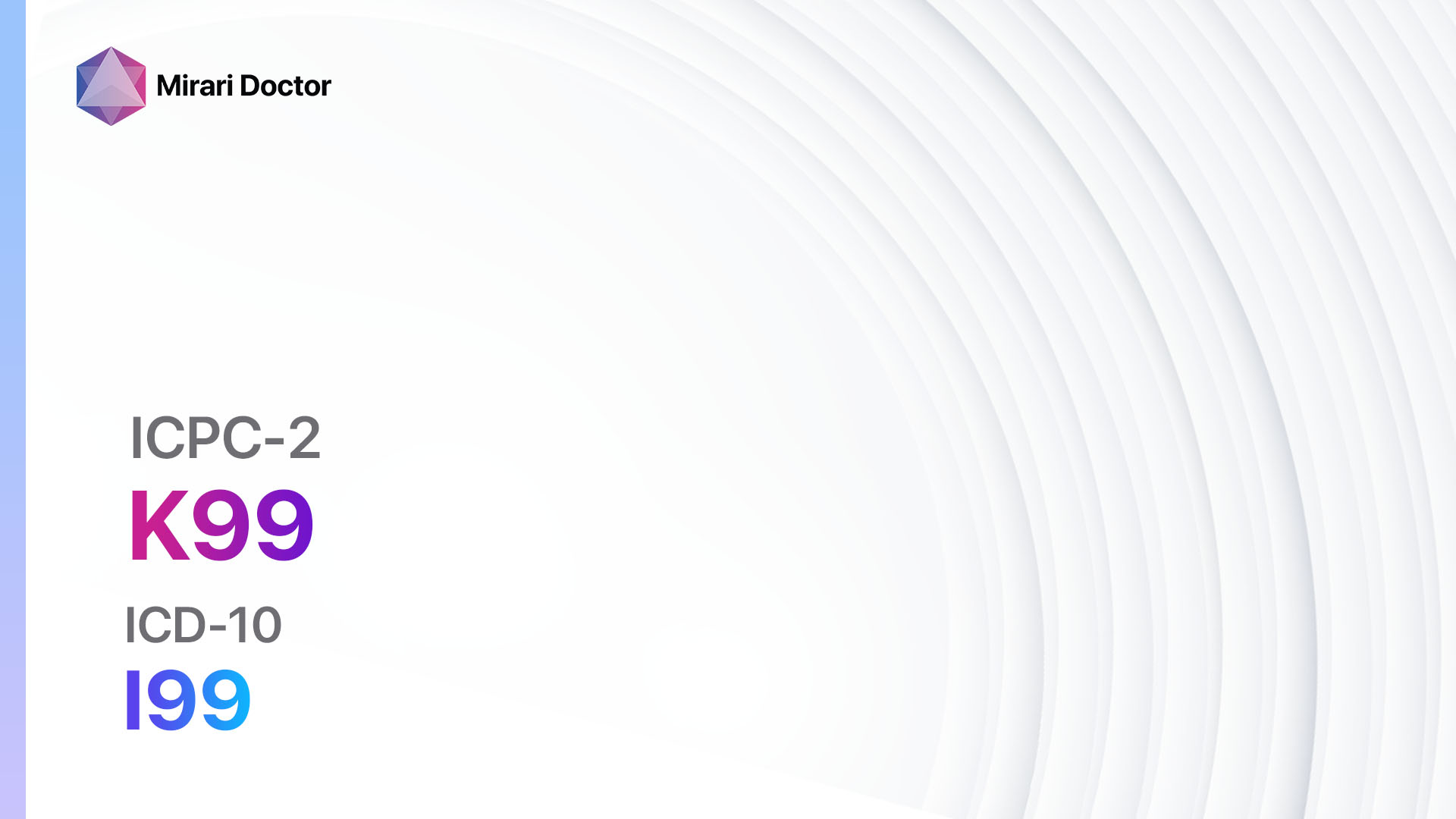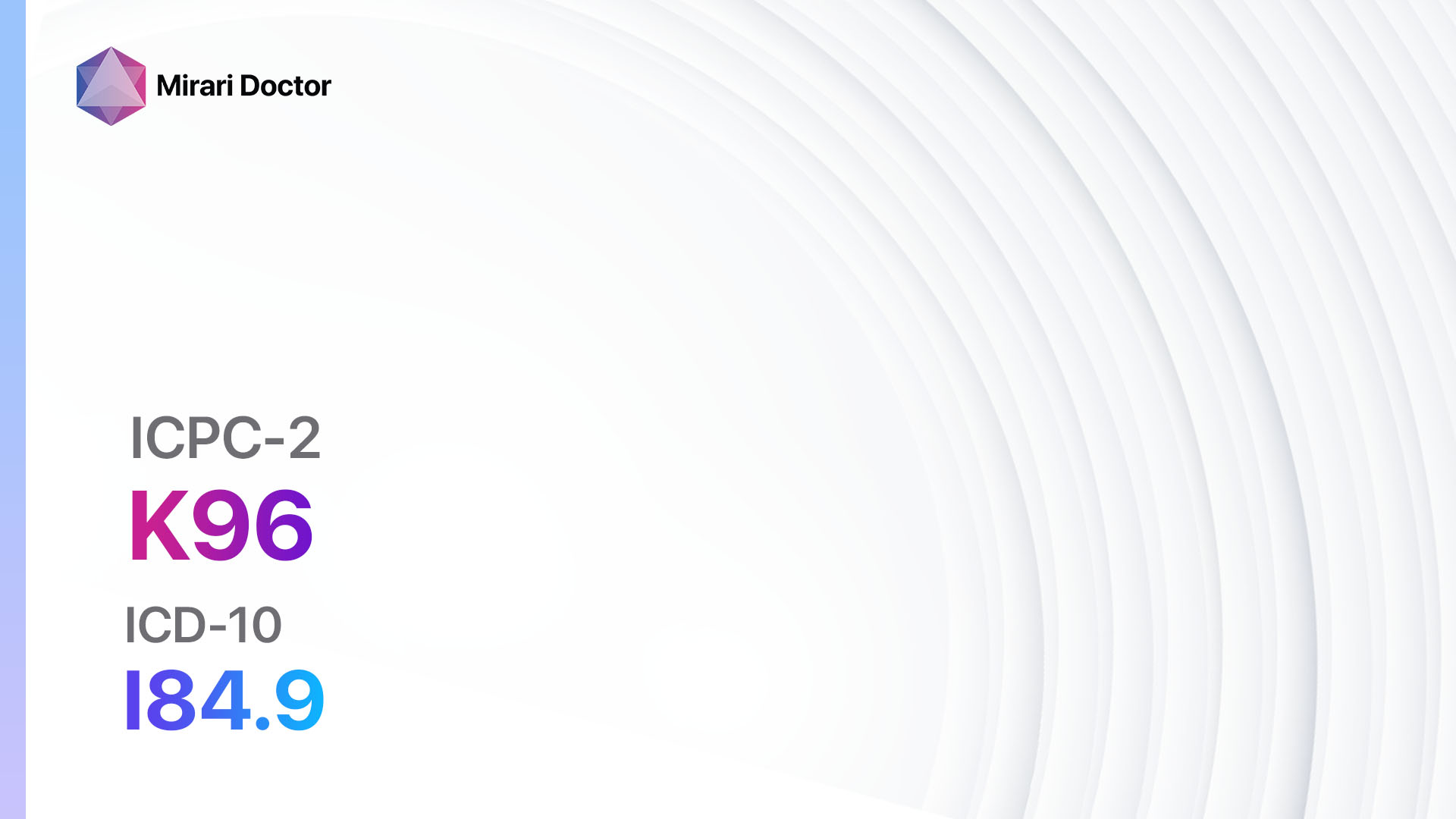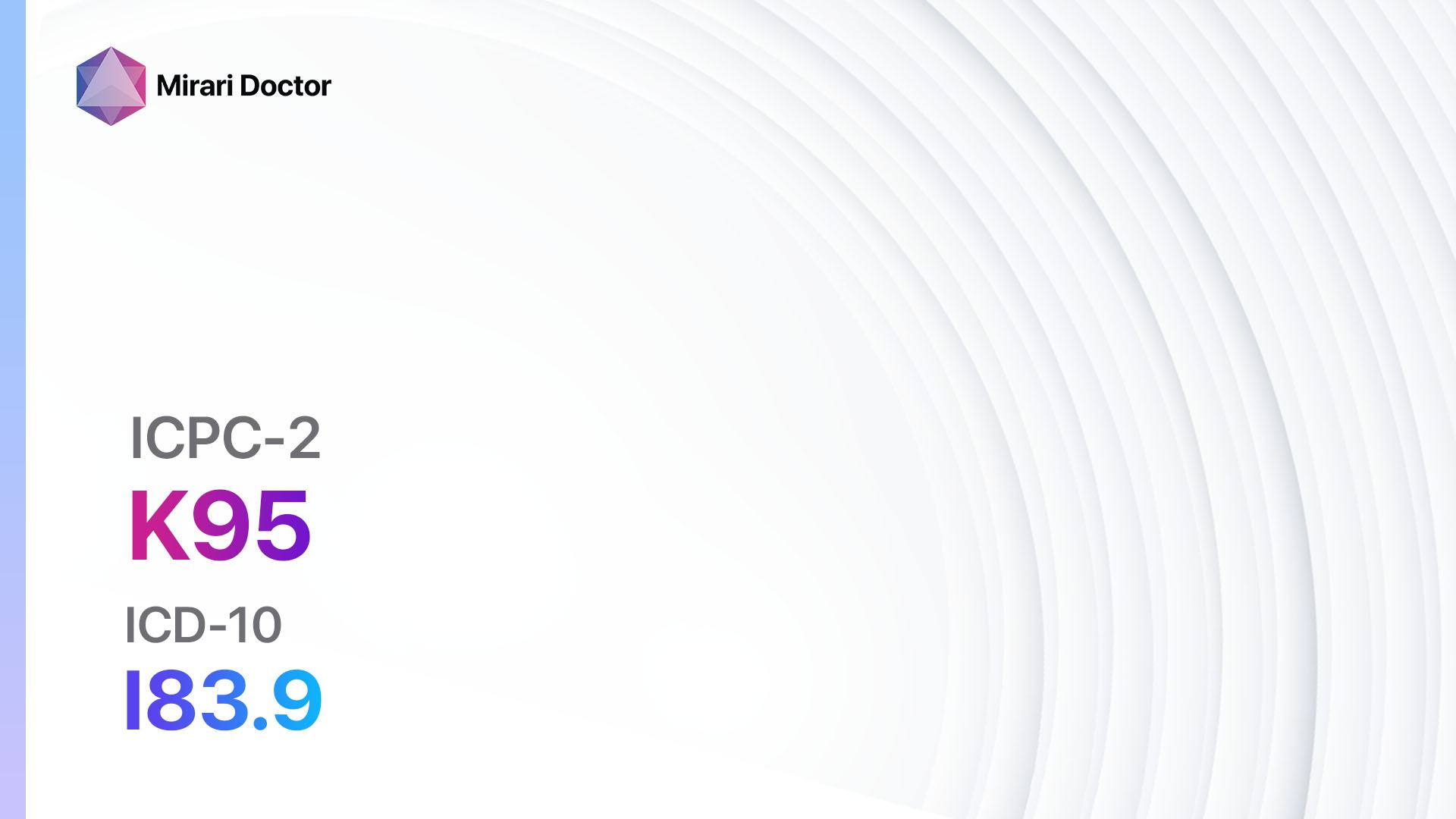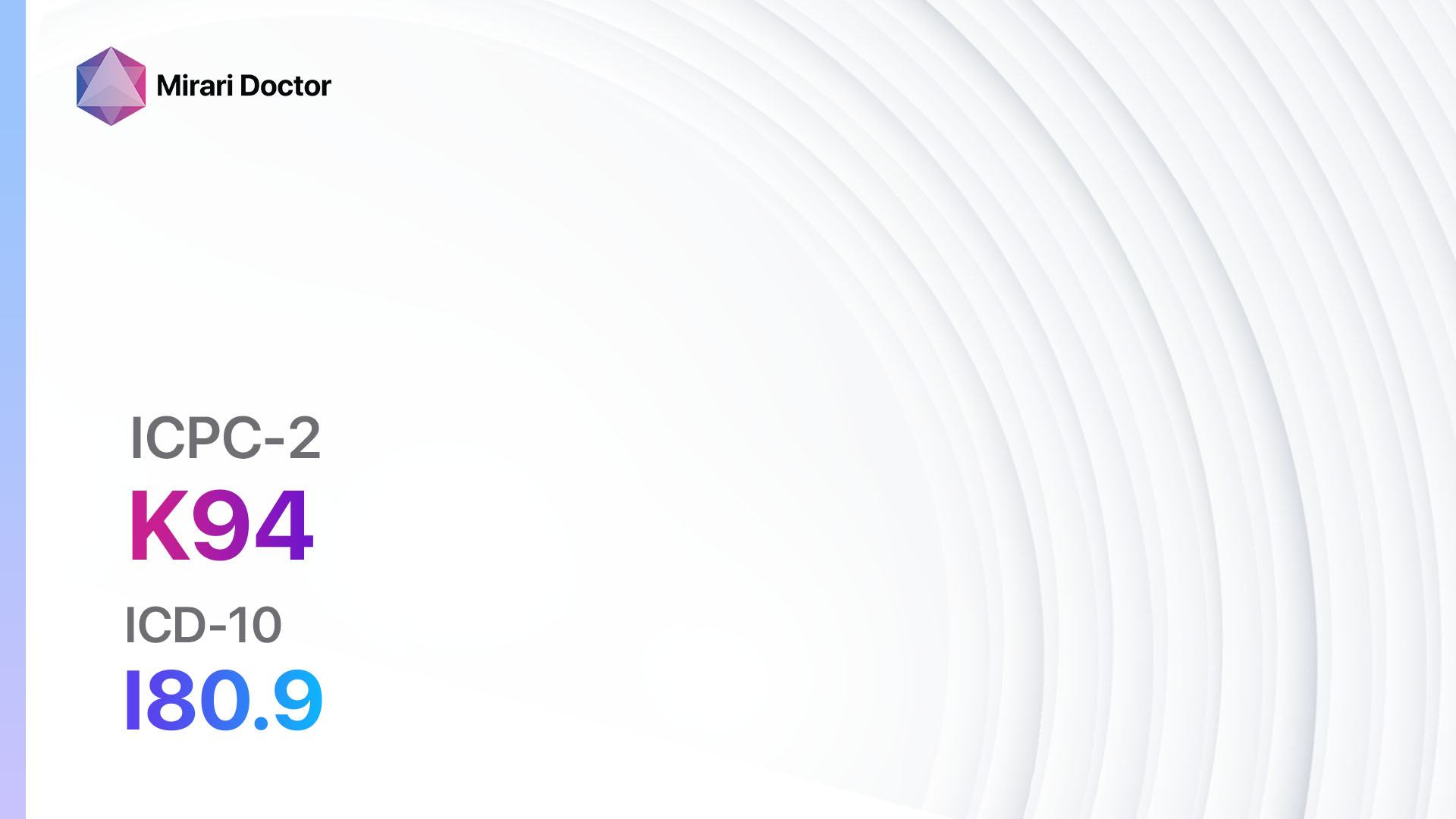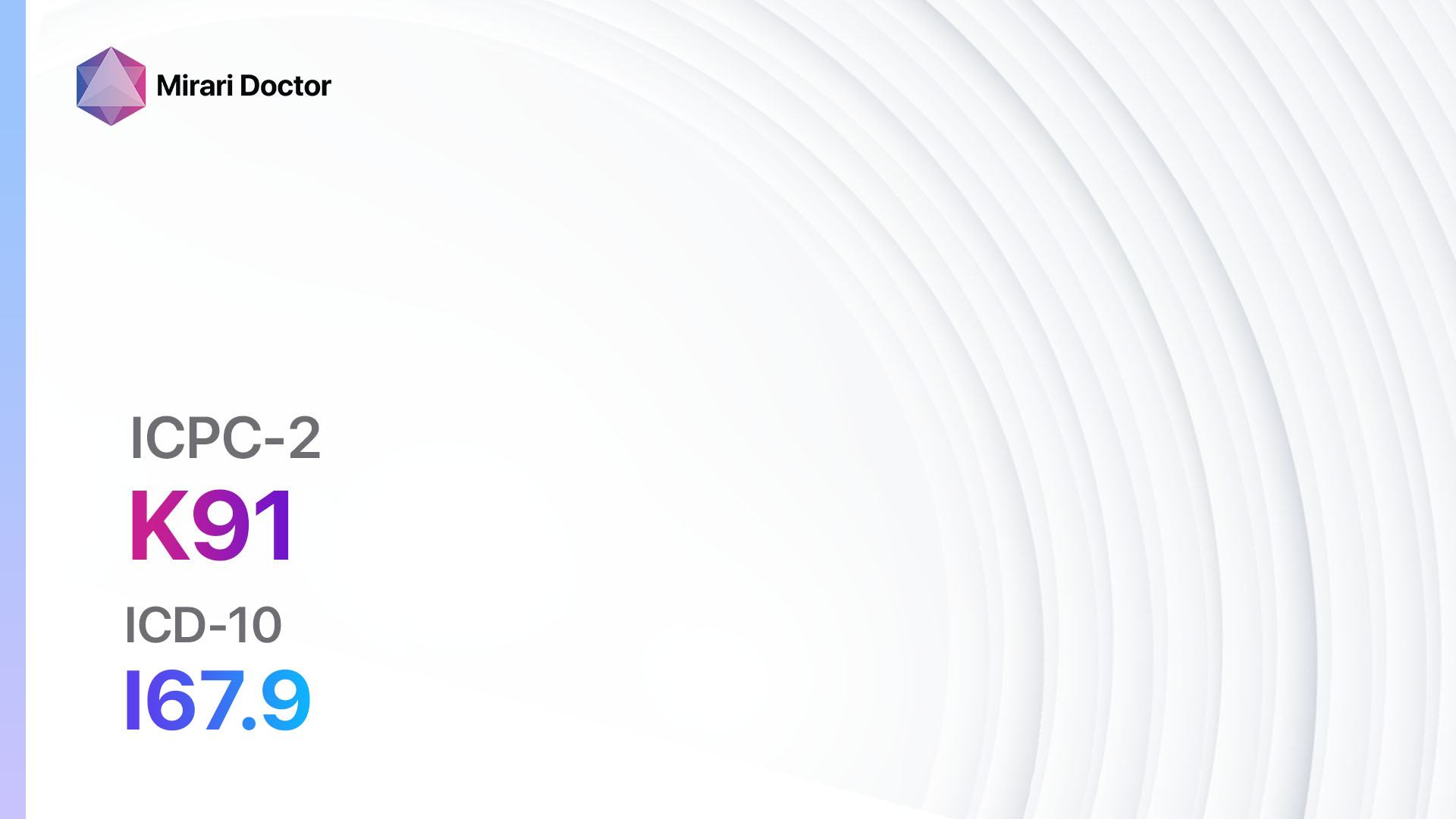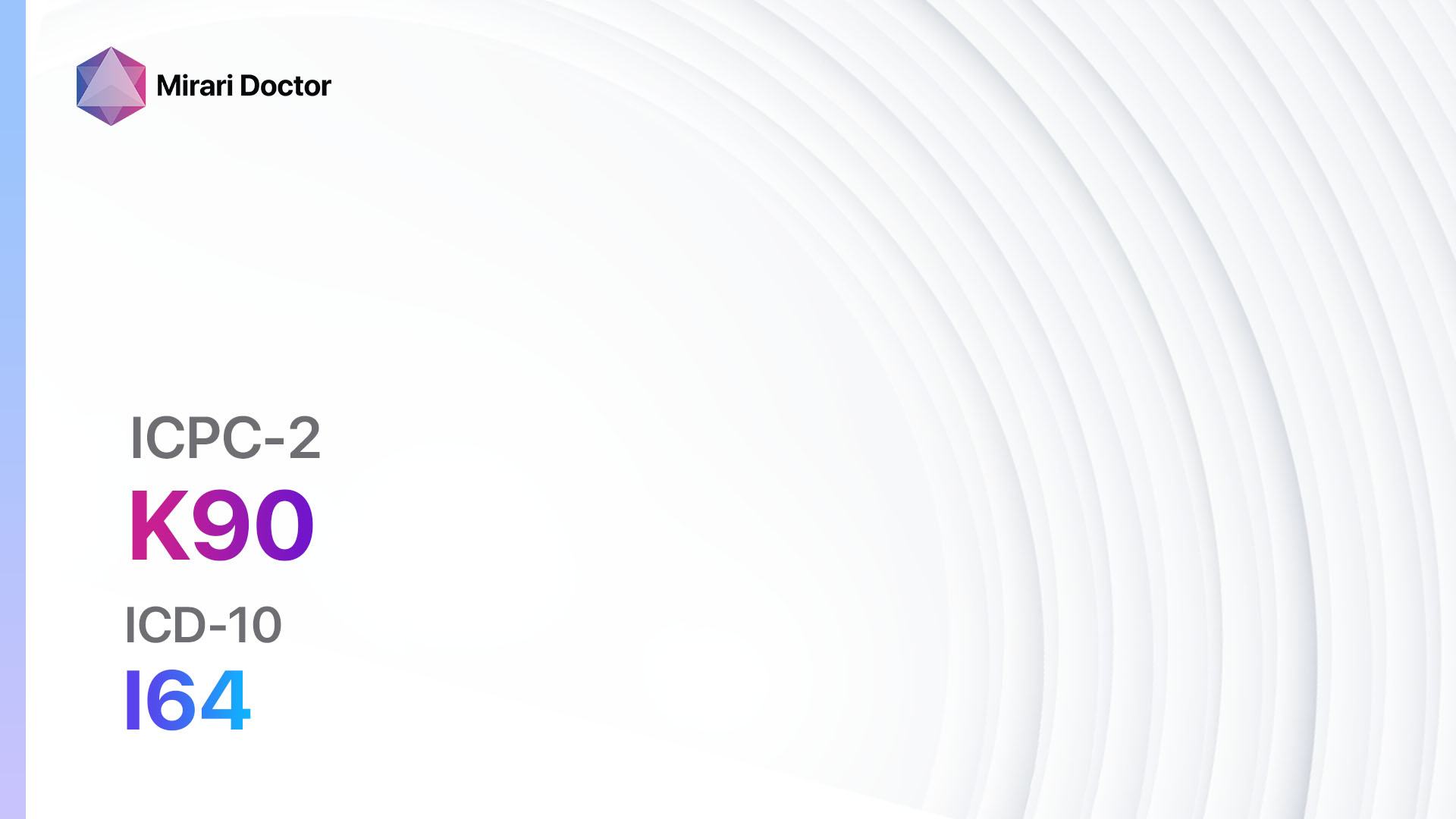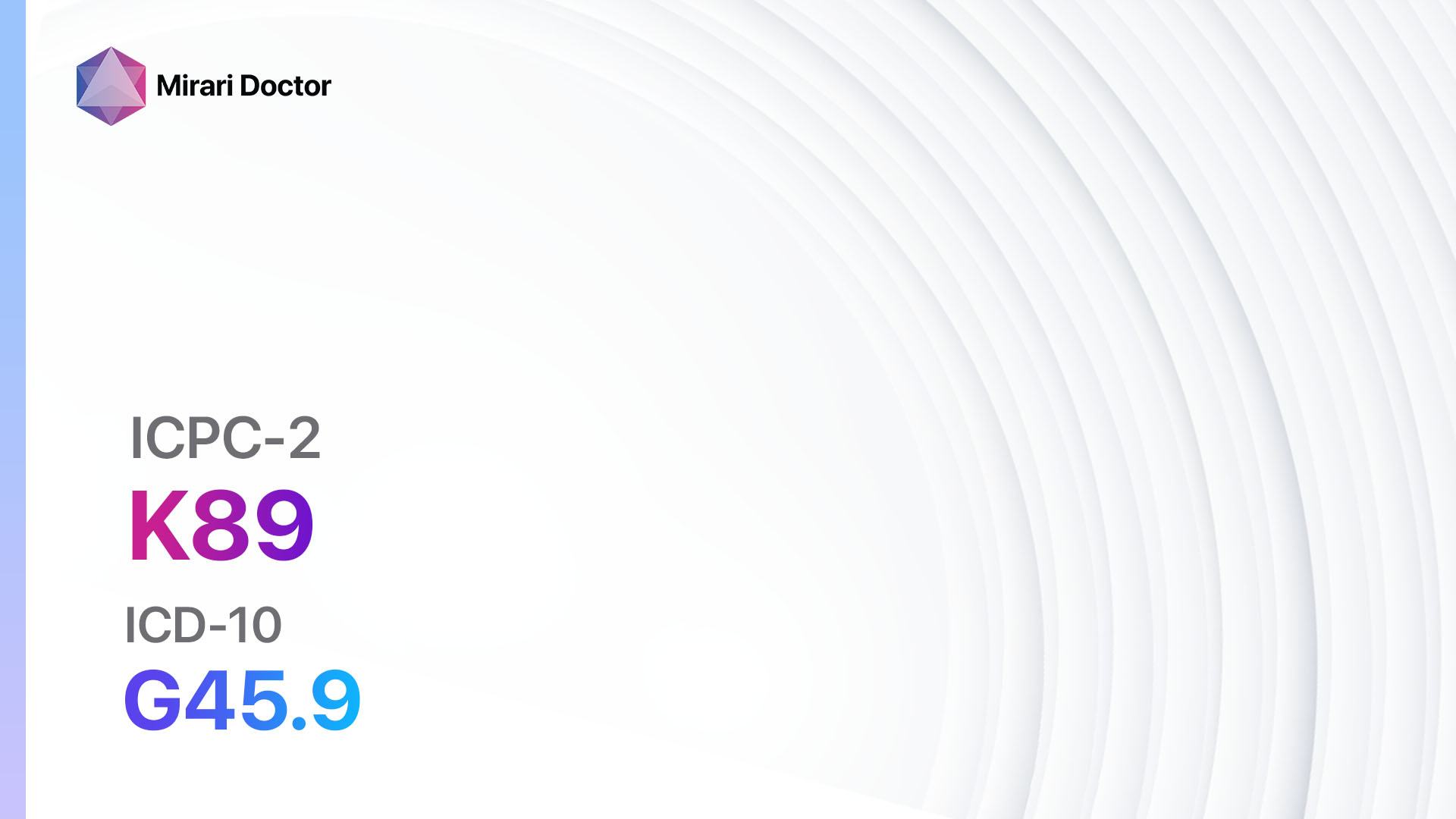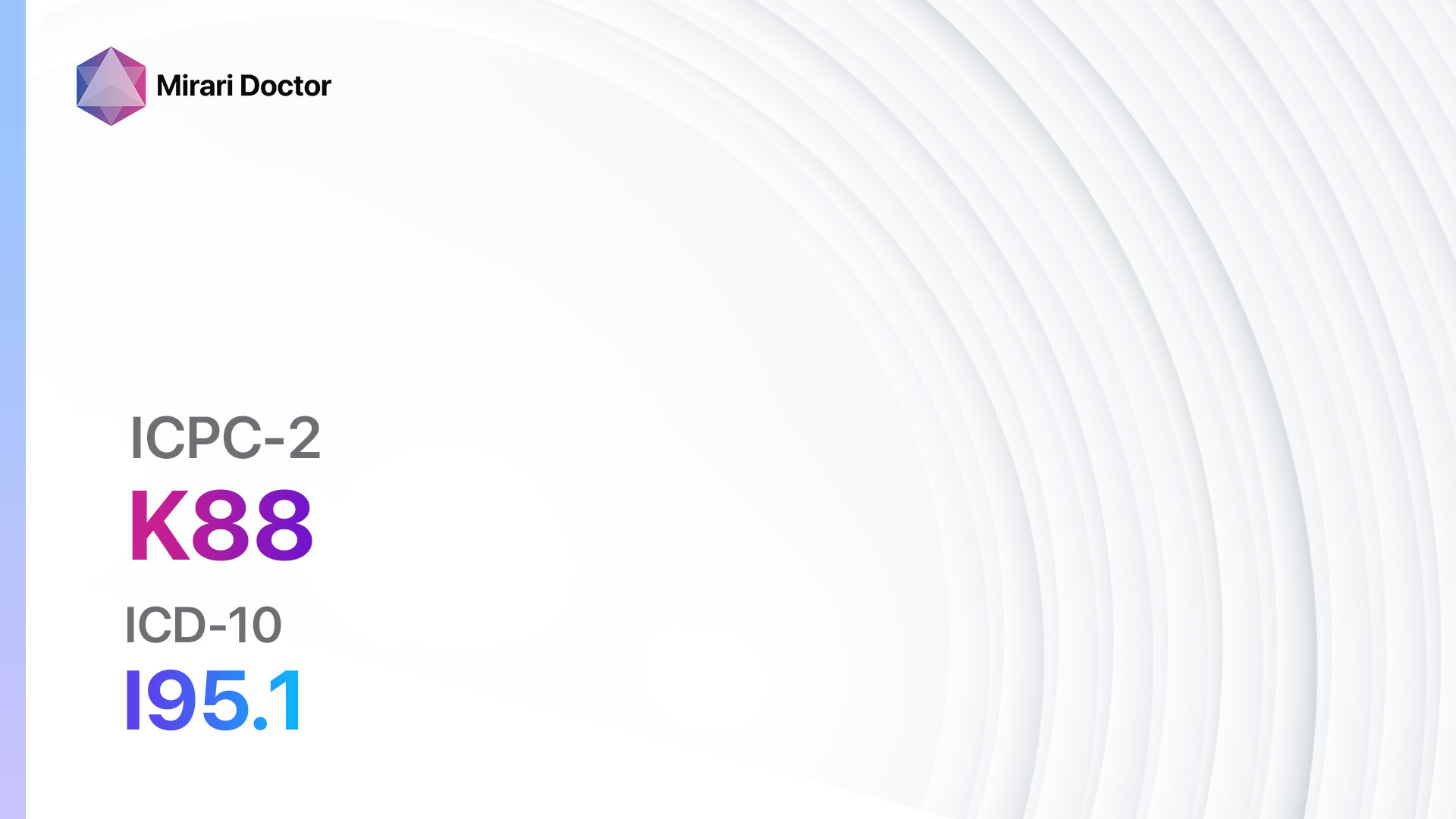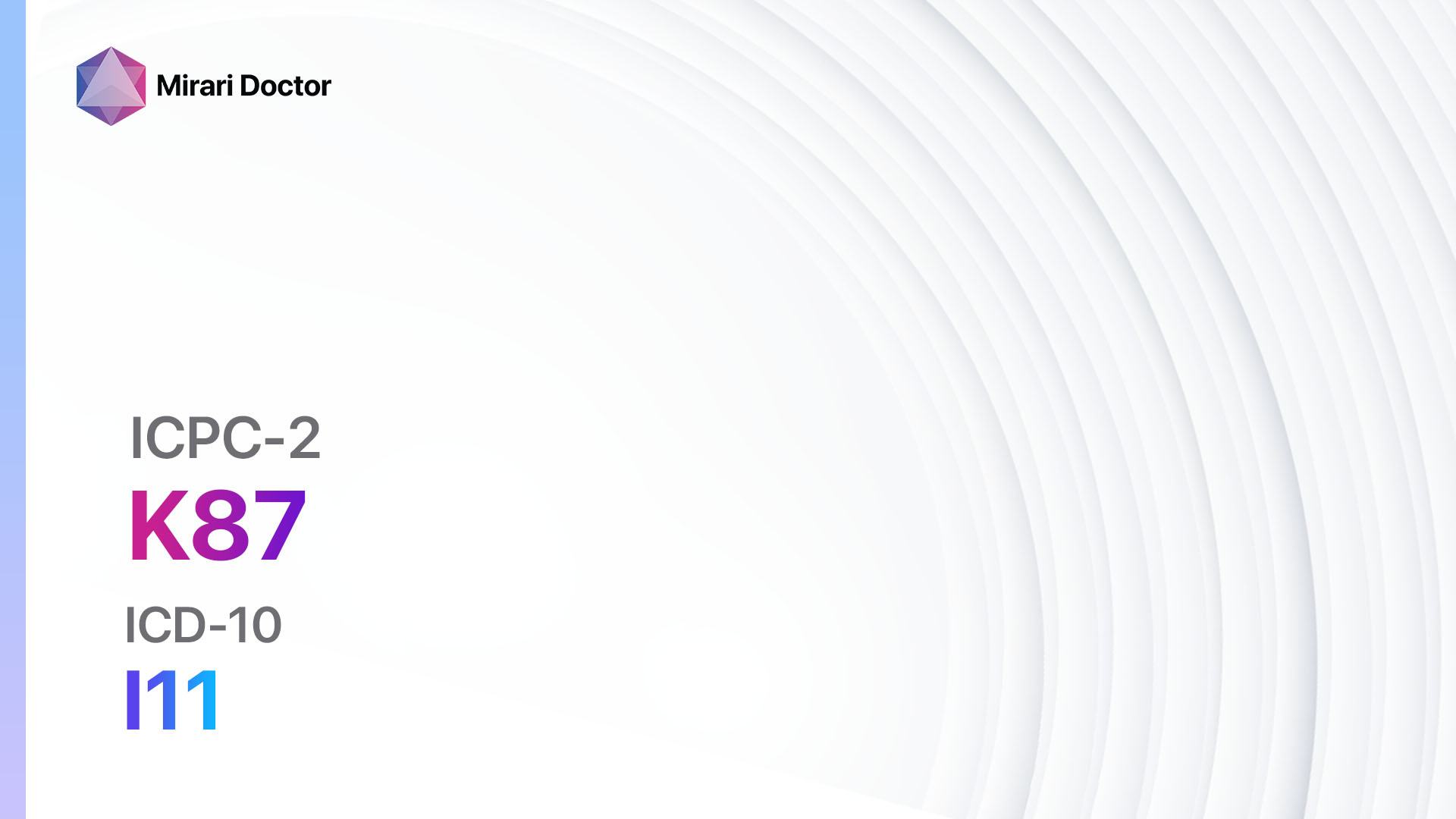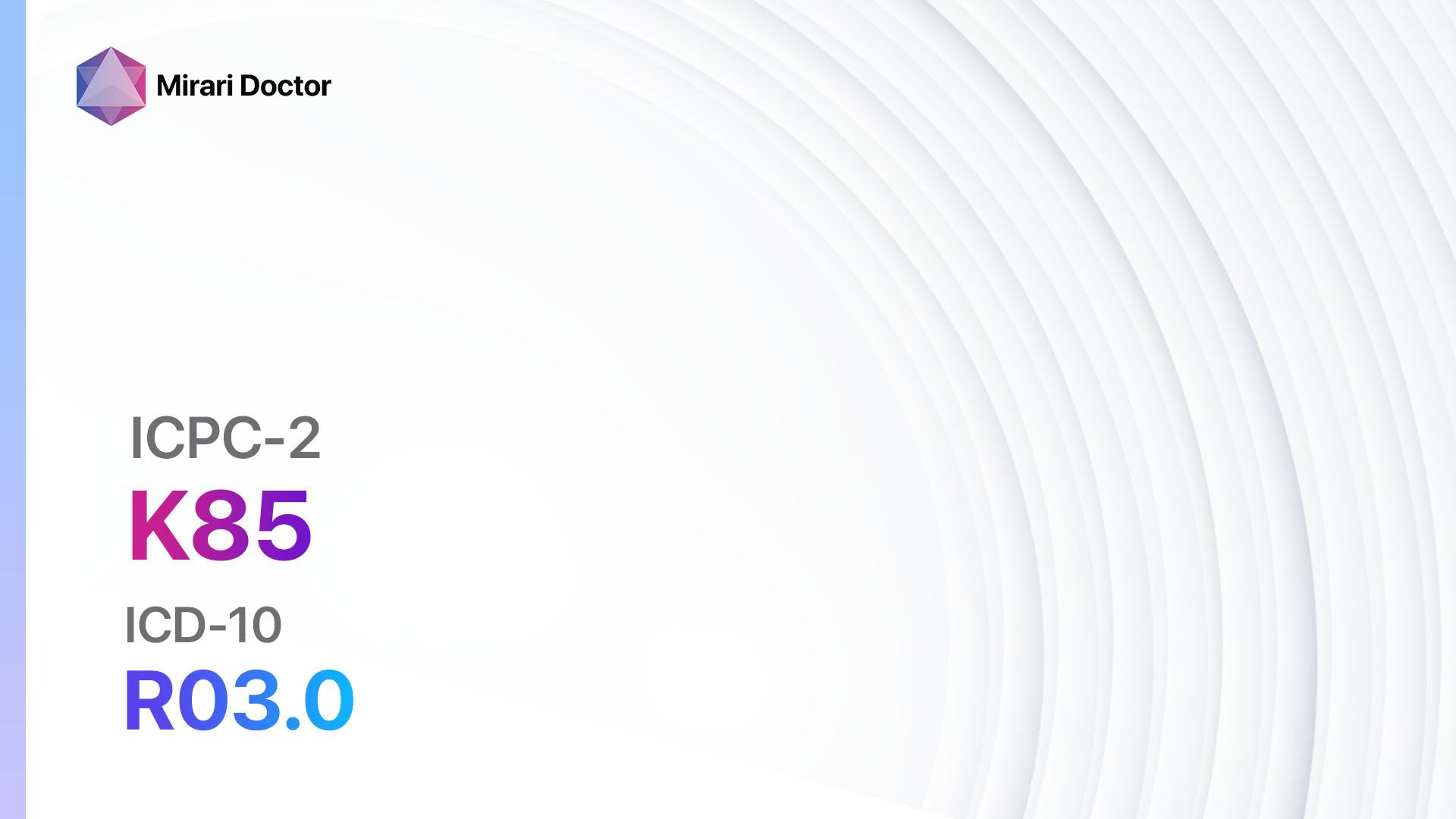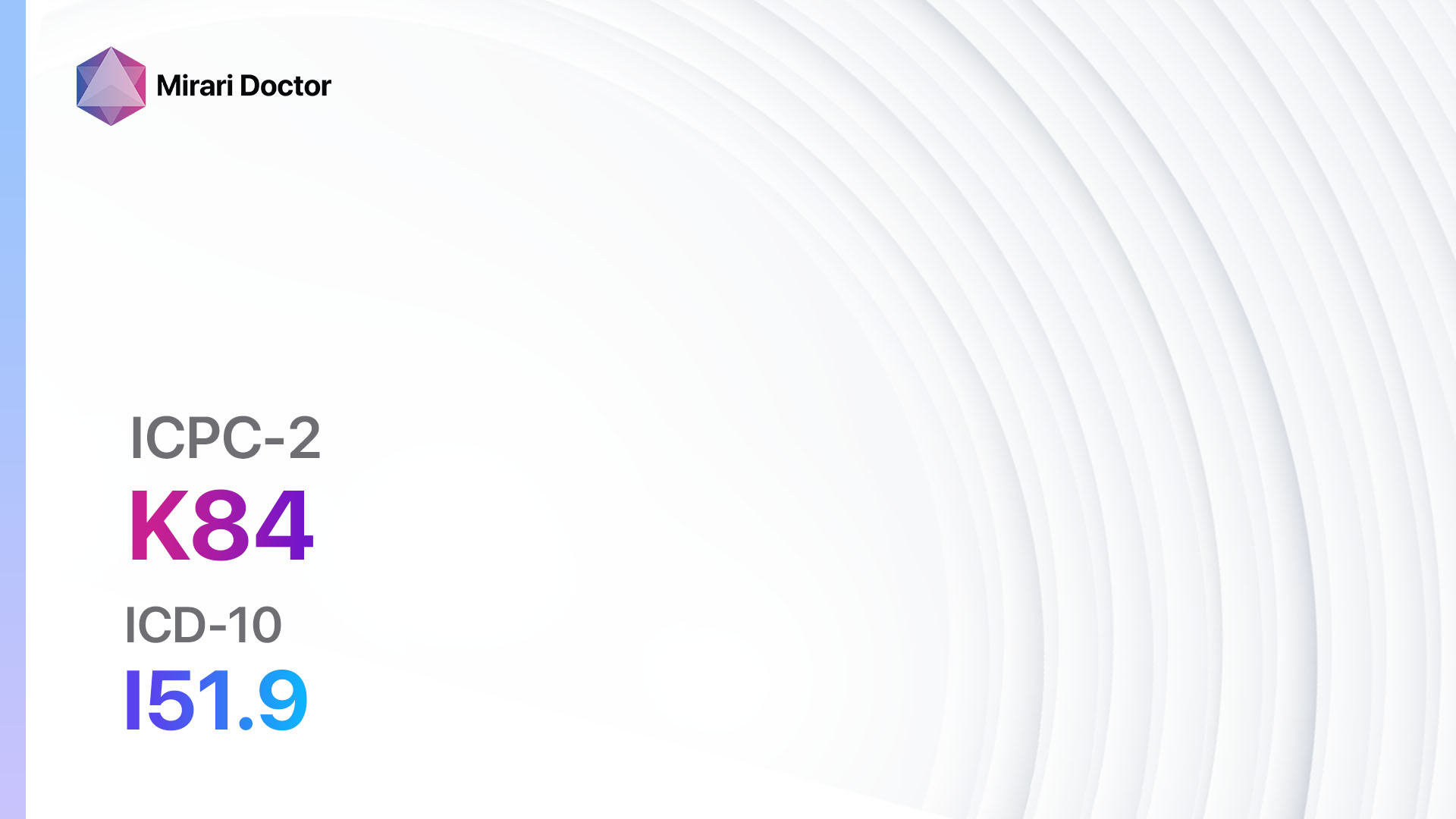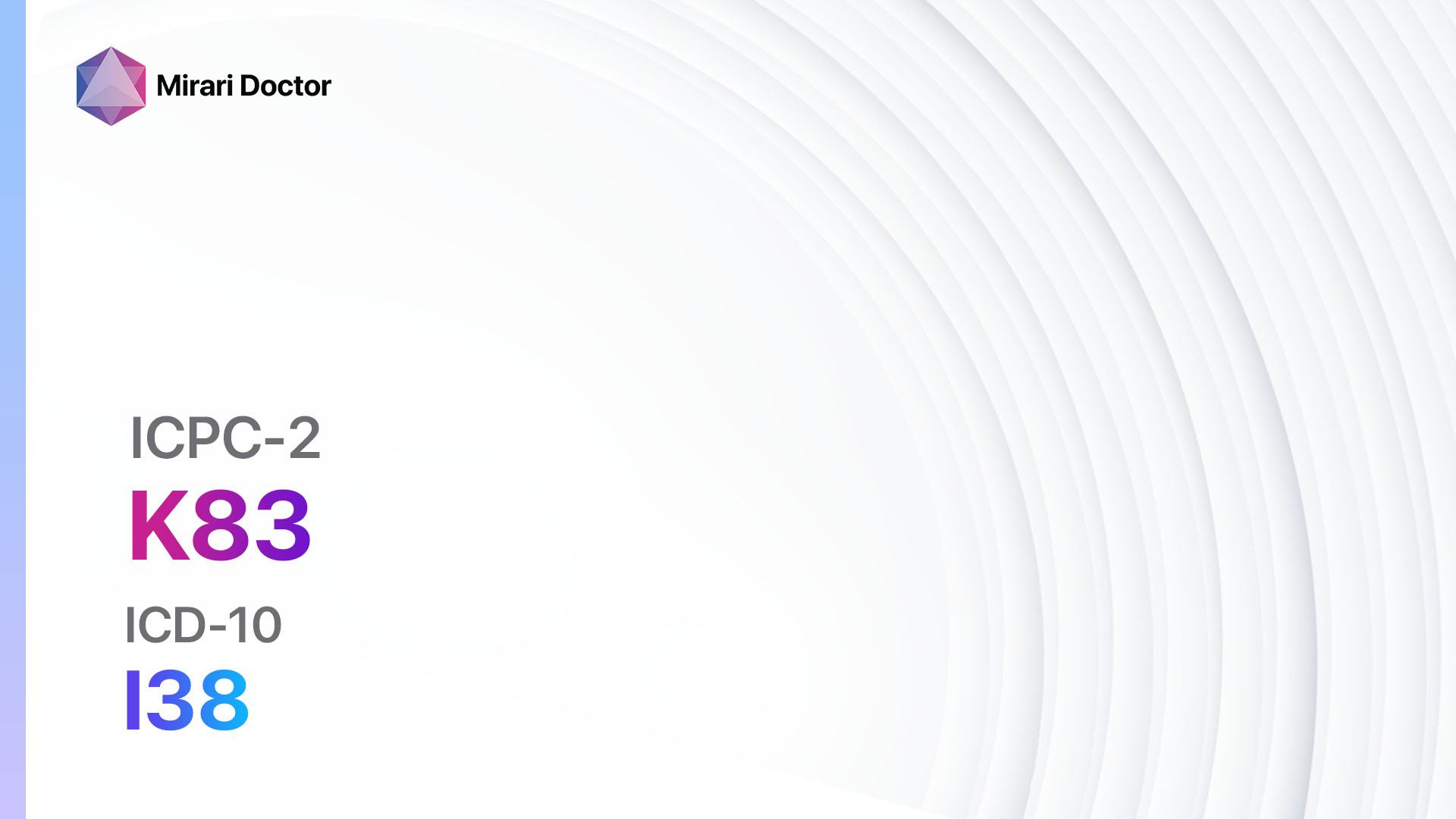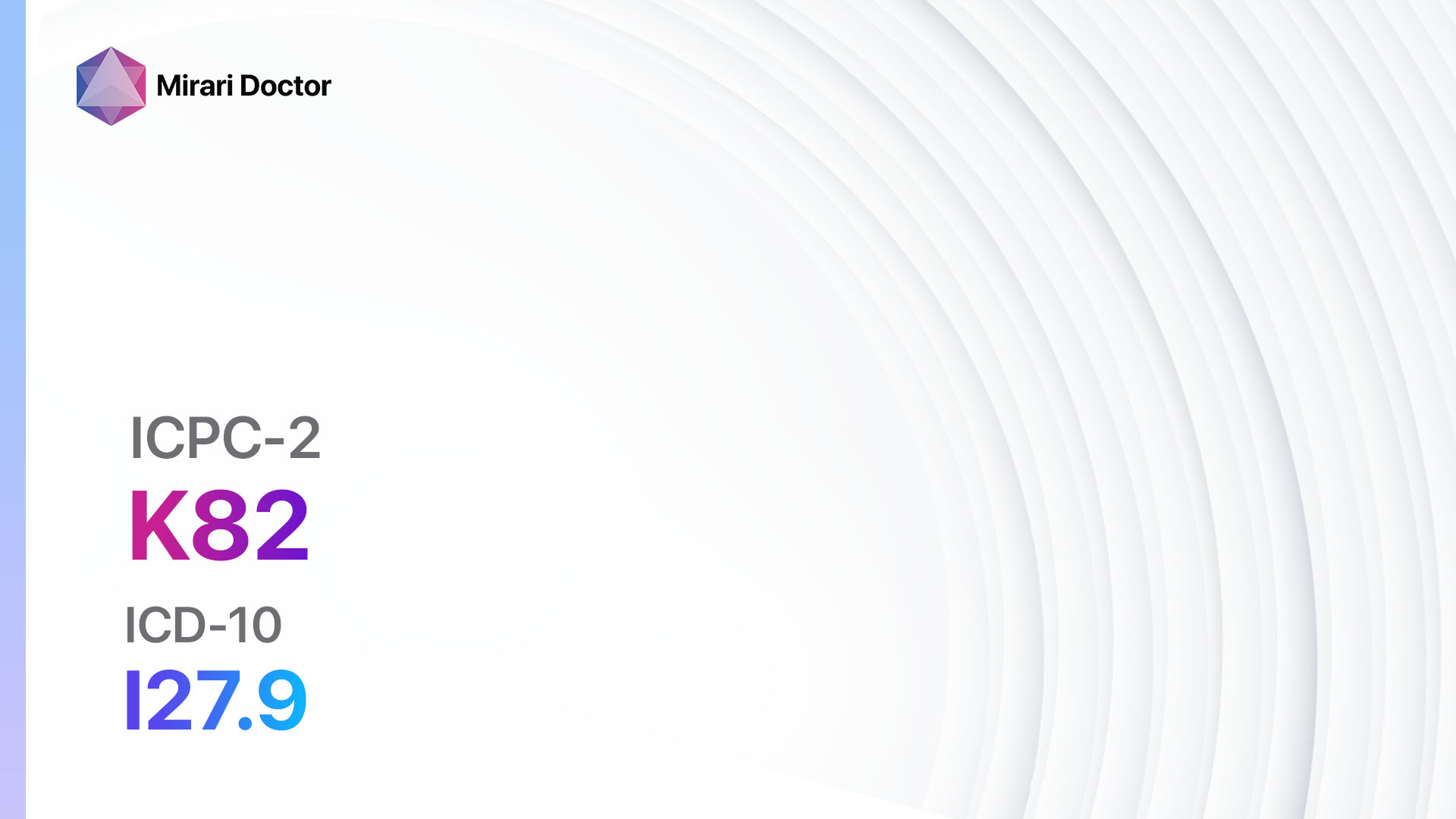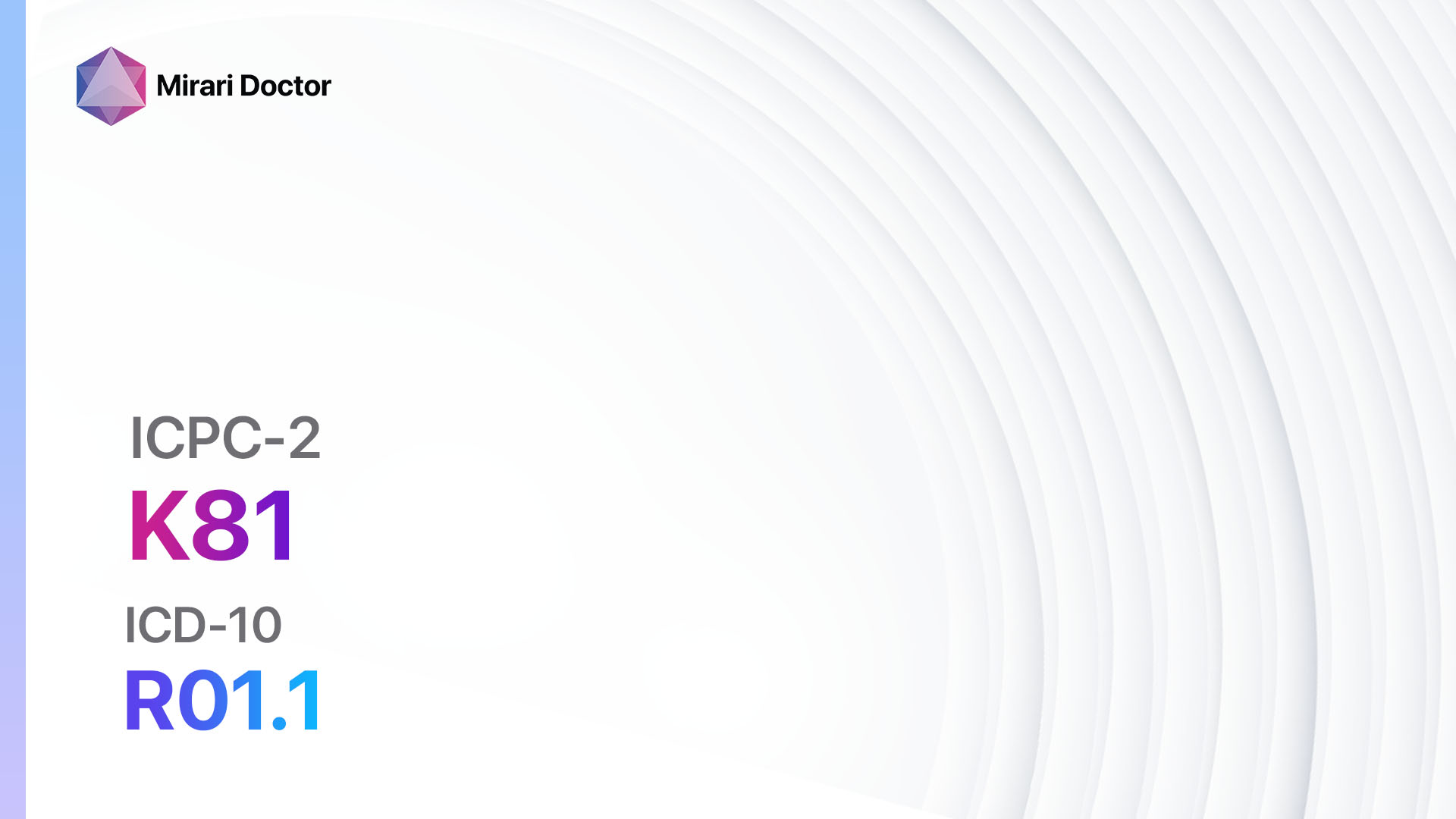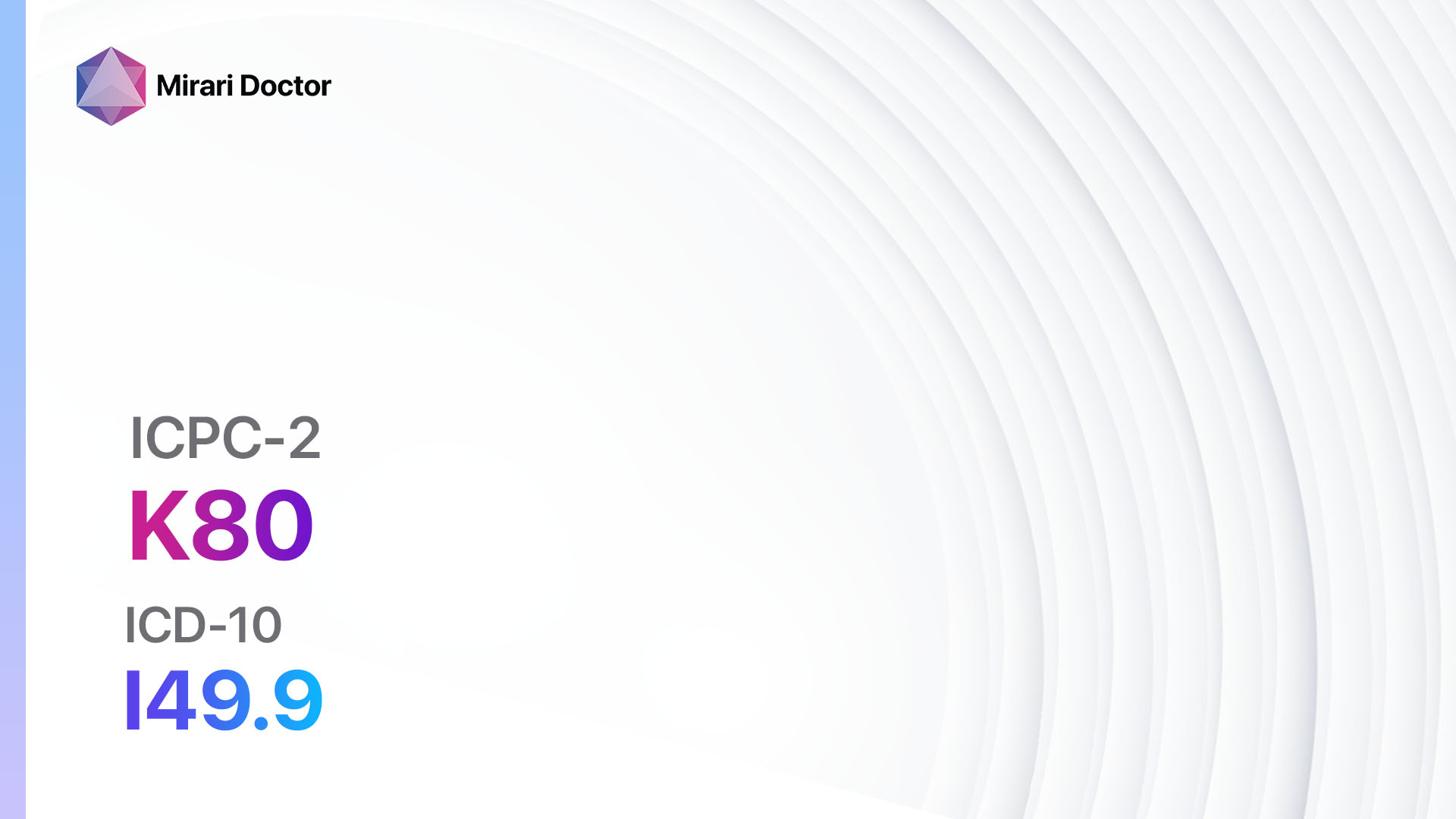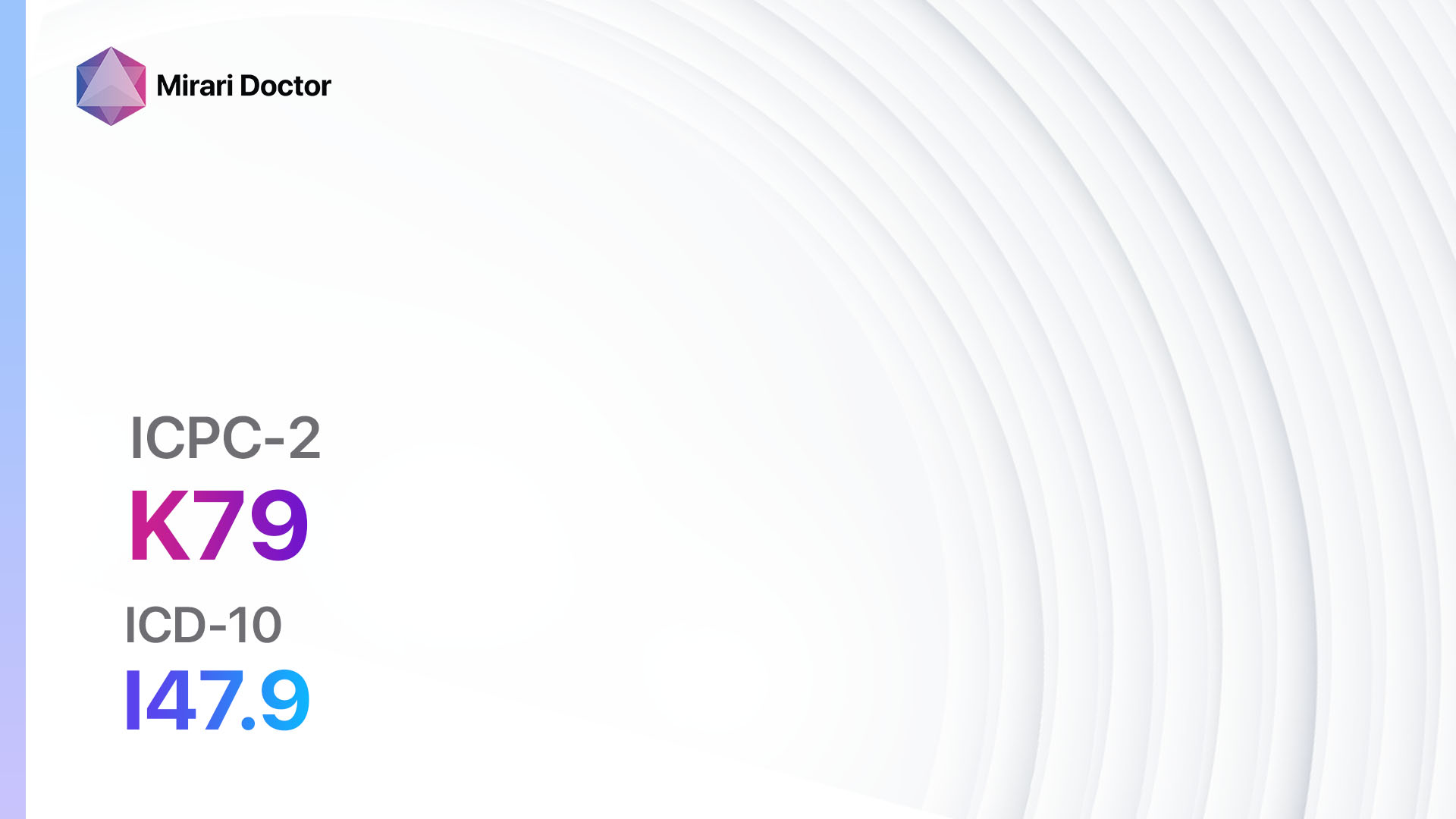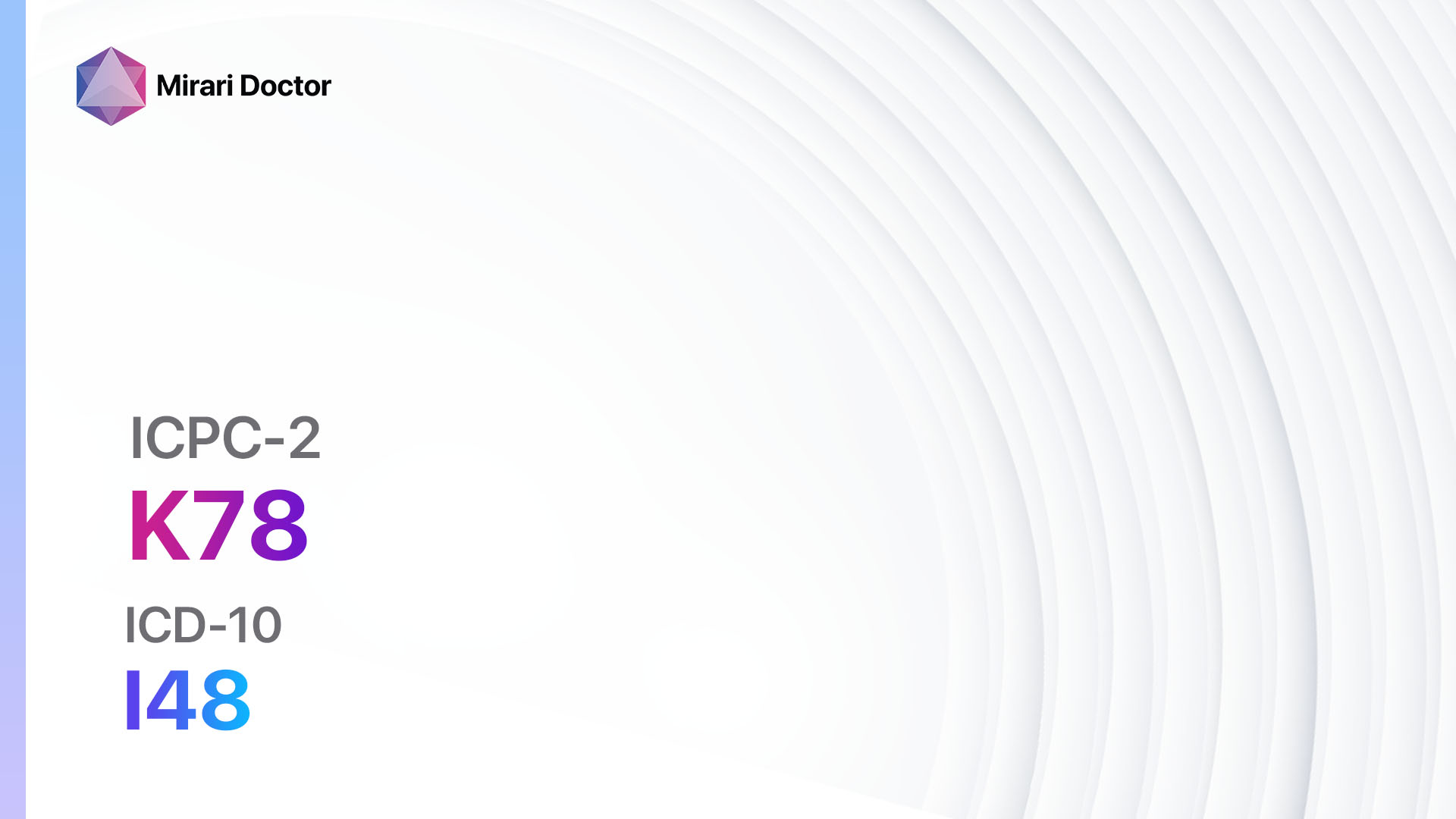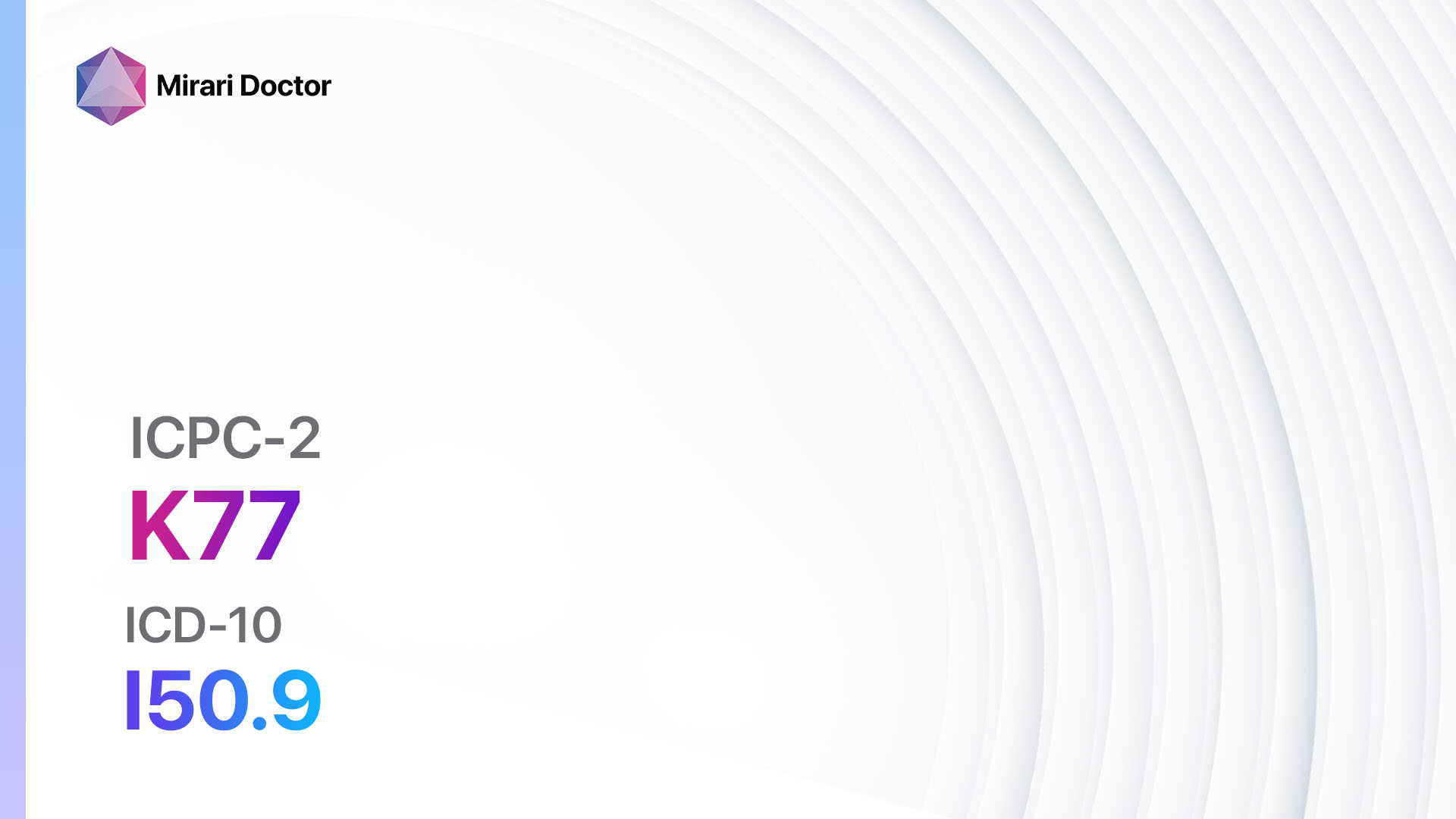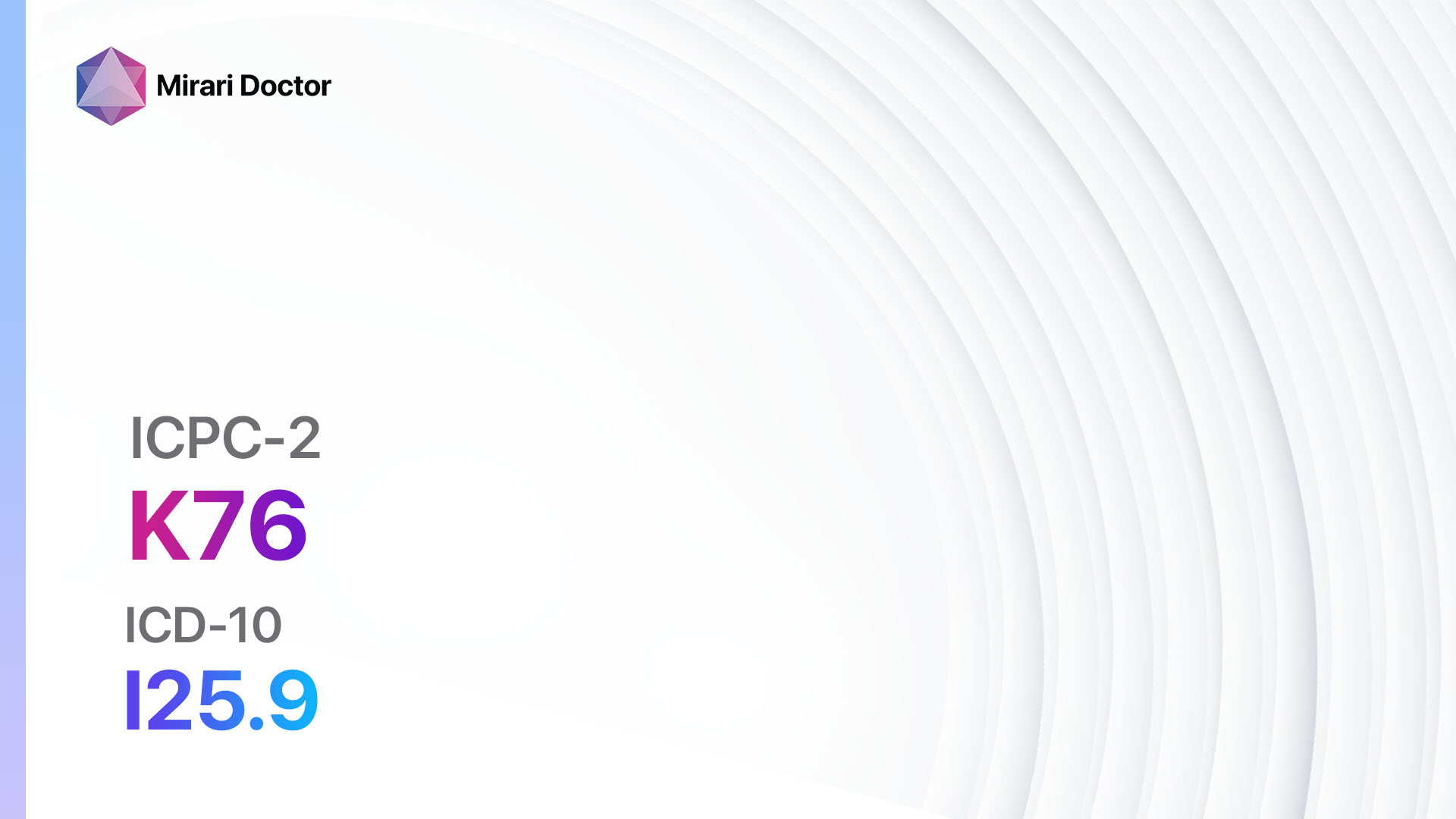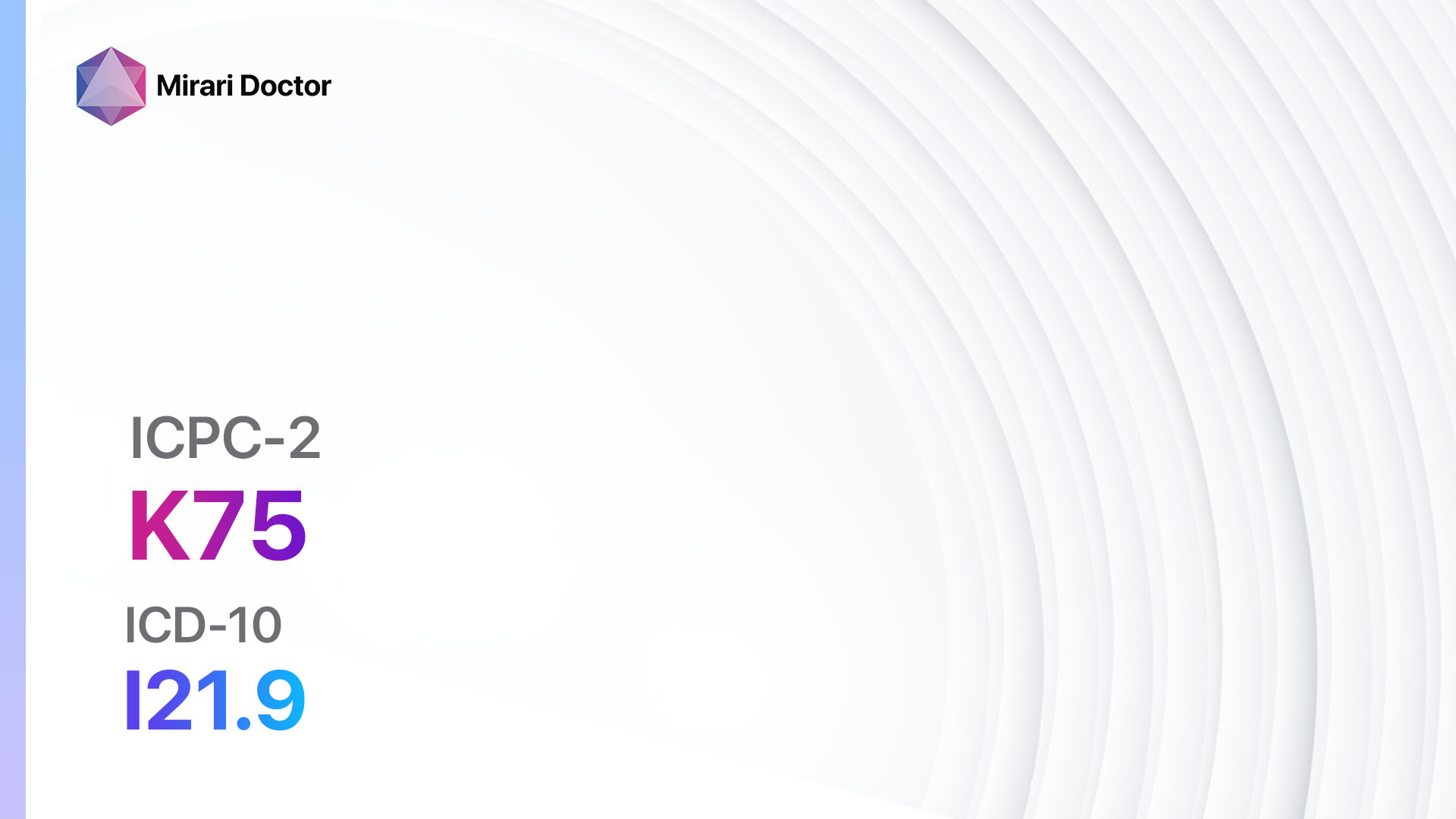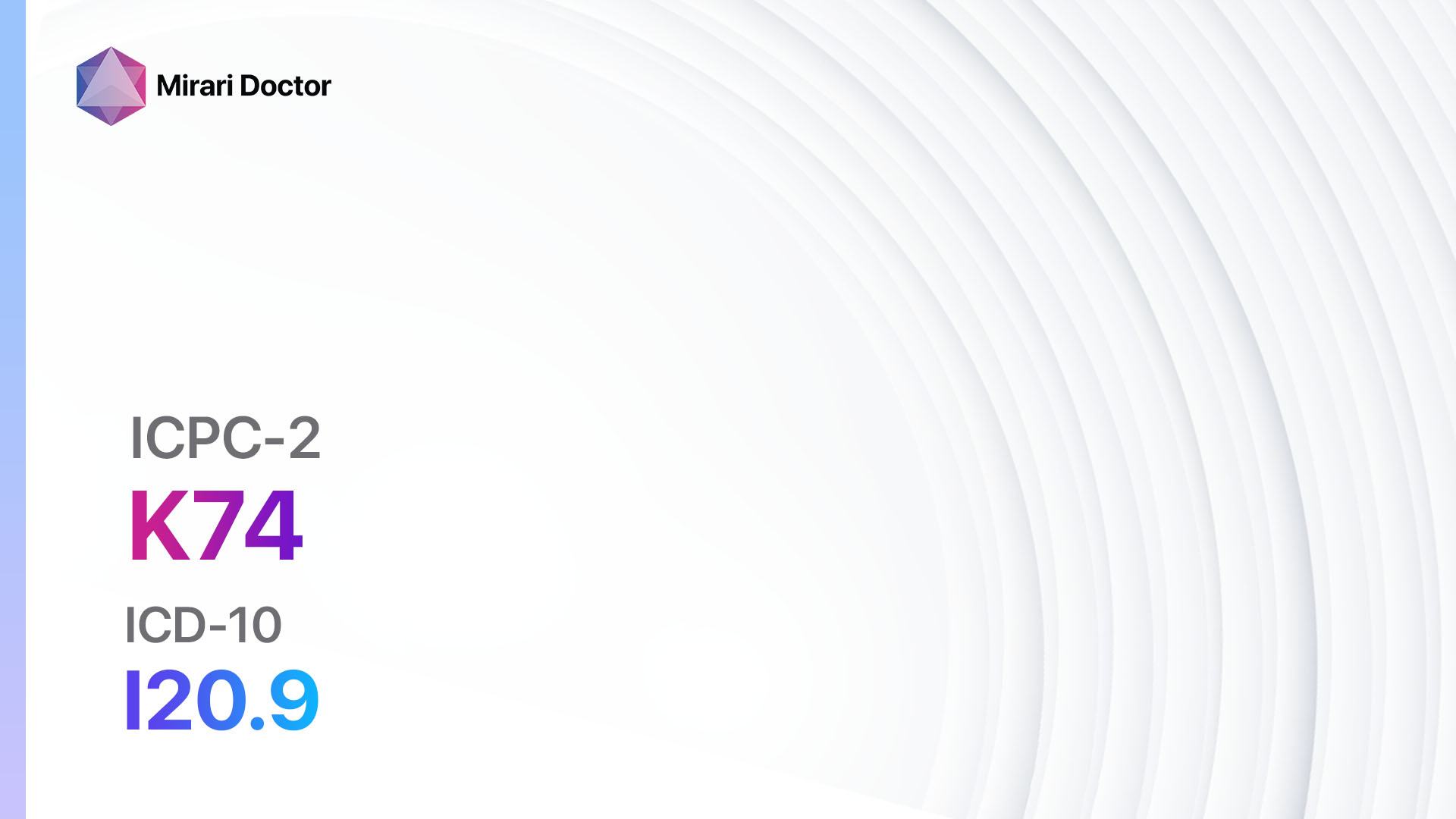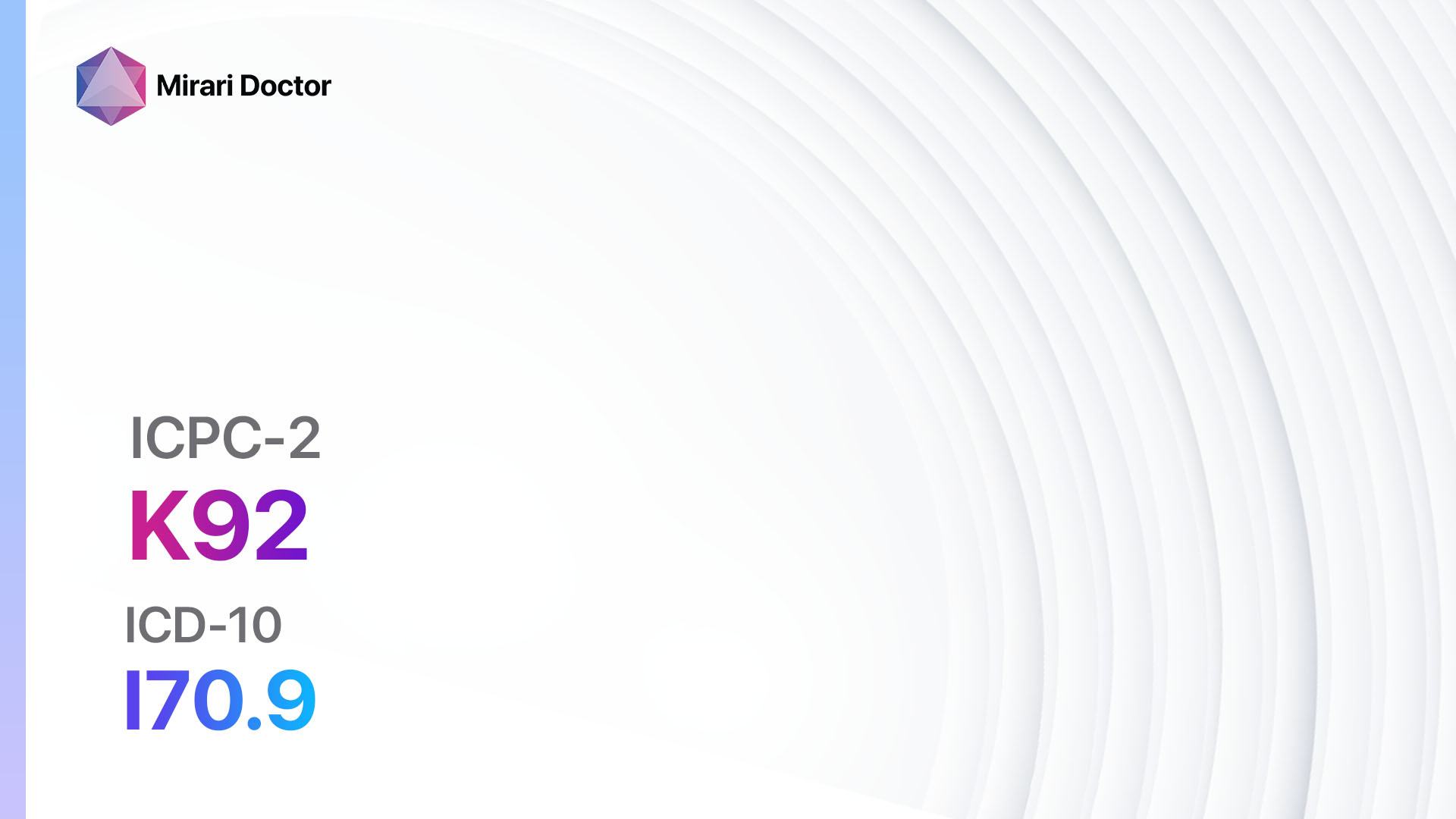
Introduction
Atherosclerosis, also known as peripheral vascular disease (PVD), is a condition characterized by the buildup of plaque in the arteries, leading to reduced blood flow to the extremities[1]. This can result in symptoms such as leg pain, numbness, and non-healing wounds[2]. The aim of this guide is to provide healthcare professionals with a comprehensive overview of the diagnostic steps, possible interventions, and lifestyle modifications for patients with atherosclerosis/PVD.
Codes
Symptoms
- Leg pain or cramping (claudication)[3]
- Numbness or weakness in the legs[4]
- Coldness or discoloration of the legs[5]
- Non-healing wounds or ulcers on the legs or feet[6]
Causes
- Smoking[7]
- High blood pressure[8]
- High cholesterol levels[9]
- Diabetes[10]
- Obesity
- Family history of atherosclerosis
- Aging
Diagnostic Steps
Medical History
- Gather information about risk factors such as smoking, hypertension, diabetes, and high cholesterol levels.
- Ask about symptoms such as leg pain, numbness, or non-healing wounds.
- Inquire about family history of atherosclerosis or cardiovascular disease.
Physical Examination
- Check blood pressure in both arms and legs to assess for differences.
- Palpate pulses in the legs and feet to evaluate for weak or absent pulses.
- Examine the legs for signs of discoloration, ulcers, or non-healing wounds.
- Perform a neurological examination to assess for any sensory or motor deficits.
Laboratory Tests
- Lipid profile: Measure total cholesterol, LDL cholesterol, HDL cholesterol, and triglyceride levels.
- Fasting blood glucose: Assess for diabetes or impaired glucose tolerance.
- Complete blood count: Check for anemia or elevated white blood cell count.
- Renal function tests: Evaluate kidney function as some medications may require dose adjustments.
Diagnostic Imaging
- Ankle-brachial index (ABI): Measure the blood pressure in the arms and legs to assess for reduced blood flow.
- Doppler ultrasound: Assess blood flow in the arteries and identify any blockages or narrowing.
- Angiography: Inject a contrast dye into the arteries and take X-ray images to visualize the blood vessels.
- Magnetic resonance angiography (MRA): Use magnetic fields and radio waves to create detailed images of the blood vessels.
Other Tests
- Treadmill exercise test: Monitor blood pressure and symptoms during exercise to assess for claudication.
- Transcutaneous oxygen measurement: Measure the oxygen levels in the skin to evaluate tissue perfusion.
- Arterial blood gas analysis: Assess oxygen and carbon dioxide levels in the blood.
Follow-up and Patient Education
- Schedule regular follow-up appointments to monitor symptoms and adjust treatment as needed.
- Educate patients about the importance of lifestyle modifications and adherence to medications.
- Provide resources for smoking cessation programs, dietary counseling, and exercise programs.
Possible Interventions
Traditional Interventions
Medications:
Top 5 drugs for Atherosclerosis/PVD:
- Statins (e.g., Atorvastatin, Simvastatin, Rosuvastatin):
- Cost: Generic versions can be $3-$50/month.
- Contraindications: Active liver disease, hypersensitivity.
- Side effects: Muscle pain, diarrhea, upset stomach.
- Severe side effects: Rhabdomyolysis, liver damage.
- Drug interactions: Grapefruit juice, other cholesterol-lowering agents.
- Warning: Regular liver function tests required.
- Antiplatelet agents (e.g., Clopidogrel, Aspirin):
- Cost: Aspirin is inexpensive (<$10/month). Clopidogrel is $10-$100/month for generic.
- Contraindications: Active bleeding, peptic ulcer disease.
- Side effects: Upset stomach, bleeding.
- Severe side effects: Severe bleeding, allergic reactions.
- Drug interactions: NSAIDs, other blood thinners.
- Warning: Risk of bleeding.
- ACE inhibitors (e.g., Ramipril, Lisinopril):
- Cost: Generics can be $10-$50/month.
- Contraindications: History of angioedema with ACE inhibitors, renal artery stenosis.
- Side effects: Cough, elevated blood urea nitrogen.
- Severe side effects: Angioedema, hyperkalemia.
- Drug interactions: Potassium supplements, NSAIDs.
- Warning: Monitoring of renal function and potassium is required.
- Beta-blockers (e.g., Metoprolol, Atenolol):
- Cost: Generic versions are typically <$30/month.
- Contraindications: Severe bradycardia, uncontrolled heart failure.
- Side effects: Fatigue, dizziness, bradycardia.
- Severe side effects: Bronchospasm, heart block.
- Drug interactions: Calcium channel blockers, insulin.
- Warning: Should not be abruptly stopped.
- Cilostazol (used specifically for claudication in PVD):
- Cost: $30-$200/month.
- Contraindications: Heart failure.
- Side effects: Headache, diarrhea.
- Severe side effects: Agranulocytosis, arrhythmia.
- Drug interactions: Omeprazole, sertraline.
- Warning: Risk of ventricular tachycardia.
Alternative Drugs:
- Fibrates (e.g., Fenofibrate): Useful for patients with high triglycerides.
- Ezetimibe: A cholesterol absorption inhibitor.
- Niacin: Vitamin B3 derivative that can help with cholesterol.
- Pentoxifylline: An alternative to cilostazol for claudication in PVD.
- Rivaroxaban: An anticoagulant used for PAD to reduce the risk of major cardiovascular events.
Surgical Procedures:
- Angioplasty and stent placement: A catheter is used to place a stent to open up narrowed arteries. Cost: $15,000 to $50,000.
- Coronary artery bypass surgery (CABG): Redirects blood around blocked or narrowed coronary arteries. Cost: $70,000 to $200,000.
Alternative Interventions
- Acupuncture: May help improve blood flow and reduce pain. Cost: $60-$120 per session.
- Chelation therapy: Controversial treatment involving the administration of chelating agents to remove heavy metals from the body. Cost: $75-$150 per session.
- Hyperbaric oxygen therapy: Involves breathing pure oxygen in a pressurized chamber to increase oxygen delivery to tissues. Cost: $200-$300 per session.
- Herbal supplements: Some herbs, such as garlic and ginkgo biloba, may have potential benefits for improving circulation. Cost: Varies depending on the specific supplement.
Lifestyle Interventions
- Smoking cessation: Encourage patients to quit smoking to reduce the risk of further damage to blood vessels. Cost: Varies depending on the smoking cessation program.
- Regular exercise: Recommend aerobic exercise to improve circulation and reduce symptoms. Cost: Varies depending on the type of exercise program.
- Healthy diet: Advise patients to follow a diet low in saturated fats, cholesterol, and sodium. Cost: Varies depending on individual food choices.
- Weight management: Encourage patients to achieve and maintain a healthy weight to reduce the strain on blood vessels. Cost: Varies depending on individual weight loss program.
- Stress management: Recommend stress reduction techniques such as meditation or yoga to improve overall cardiovascular health. Cost: Varies depending on the specific stress management program.
It is important to note that the cost ranges provided are approximate and may vary depending on the location and availability of the interventions.
Mirari Cold Plasma Alternative Intervention
Understanding Mirari Cold Plasma
- Safe and Non-Invasive Treatment: Mirari Cold Plasma is a safe and non-invasive treatment option for various skin conditions. It does not require incisions, minimizing the risk of scarring, bleeding, or tissue damage.
- Efficient Extraction of Foreign Bodies: Mirari Cold Plasma facilitates the removal of foreign bodies from the skin by degrading and dissociating organic matter, allowing easier access and extraction.
- Pain Reduction and Comfort: Mirari Cold Plasma has a local analgesic effect, providing pain relief during the treatment, making it more comfortable for the patient.
- Reduced Risk of Infection: Mirari Cold Plasma has antimicrobial properties, effectively killing bacteria and reducing the risk of infection.
- Accelerated Healing and Minimal Scarring: Mirari Cold Plasma stimulates wound healing and tissue regeneration, reducing healing time and minimizing the formation of scars.
Mirari Cold Plasma Prescription
Video instructions for using Mirari Cold Plasma Device – K92 Atherosclerosis/PVD (ICD-10:I70.9)
| Mild | Moderate | Severe |
| Mode setting: 1 (Infection) Location: 5 (Lungs) Morning: 15 minutes, Evening: 15 minutes |
Mode setting: 1 (Infection) Location: 5 (Lungs) Morning: 30 minutes, Lunch: 30 minutes, Evening: 30 minutes |
Mode setting: 1 (Infection) Location: 5 (Lungs) Morning: 30 minutes, Lunch: 30 minutes, Evening: 30 minutes |
| Mode setting: 2 (Wound Healing) Location: 5 (Lungs) Morning: 15 minutes, Evening: 15 minutes |
Mode setting: 2 (Wound Healing) Location: 5 (Lungs) Morning: 30 minutes, Lunch: 30 minutes, Evening: 30 minutes |
Mode setting: 2 (Wound Healing) Location: 5 (Lungs) Morning: 30 minutes, Lunch: 30 minutes, Evening: 30 minutes |
| Mode setting: 7 (Immunotherapy) Location: 1 (Sacrum) Morning: 15 minutes, Evening: 15 minutes |
Mode setting: 7 (Immunotherapy) Location: 1 (Sacrum) Morning: 30 minutes, Lunch: 30 minutes, Evening: 30 minutes |
Mode setting: 7 (Immunotherapy) Location: 1 (Sacrum) Morning: 30 minutes, Lunch: 30 minutes, Evening: 30 minutes |
| Mode setting: 7 (Immunotherapy) Location: 4 (Heart, Bile & Pancreas) Morning: 15 minutes, Evening: 15 minutes |
Mode setting: 7 (Immunotherapy) Location: 4 (Heart, Bile & Pancreas) Morning: 30 minutes, Lunch: 30 minutes, Evening: 30 minutes |
Mode setting:7 (Immunotherapy) Location: 4 (Heart, Bile & Pancreas) Morning: 30 minutes, Lunch: 30 minutes, Evening: 30 minutes |
| Total Morning: 60 minutes approx. $10 USD, Evening: 60 minutes approx. $10 USD |
Total Morning: 120 minutes approx. $20 USD, Lunch: 120 minutes approx. $20 USD, Evening: 120 minutes approx. $20 USD, |
Total Morning: 120 minutes approx. $20 USD, Lunch: 120 minutes approx. $20 USD, Evening: 120 minutes approx. $20 USD, |
| Usual treatment for 7-60 days approx. $140 USD – $1200 USD | Usual treatment for 6-8 weeks approx. $2,520 USD – $3,360 USD |
Usual treatment for 3-6 months approx. $5,400 USD – $10,800 USD
|
 |
|
Use the Mirari Cold Plasma device to treat Atherosclerosis/PVD effectively.
WARNING: MIRARI COLD PLASMA IS DESIGNED FOR THE HUMAN BODY WITHOUT ANY ARTIFICIAL OR THIRD PARTY PRODUCTS. USE OF OTHER PRODUCTS IN COMBINATION WITH MIRARI COLD PLASMA MAY CAUSE UNPREDICTABLE EFFECTS, HARM OR INJURY. PLEASE CONSULT A MEDICAL PROFESSIONAL BEFORE COMBINING ANY OTHER PRODUCTS WITH USE OF MIRARI.
Step 1: Cleanse the Skin
- Start by cleaning the affected area of the skin with a gentle cleanser or mild soap and water. Gently pat the area dry with a clean towel.
Step 2: Prepare the Mirari Cold Plasma device
- Ensure that the Mirari Cold Plasma device is fully charged or has fresh batteries as per the manufacturer’s instructions. Make sure the device is clean and in good working condition.
- Switch on the Mirari device using the power button or by following the specific instructions provided with the device.
- Some Mirari devices may have adjustable settings for intensity or treatment duration. Follow the manufacturer’s instructions to select the appropriate settings based on your needs and the recommended guidelines.
Step 3: Apply the Device
- Place the Mirari device in direct contact with the affected area of the skin. Gently glide or hold the device over the skin surface, ensuring even coverage of the area experiencing.
- Slowly move the Mirari device in a circular motion or follow a specific pattern as indicated in the user manual. This helps ensure thorough treatment coverage.
Step 4: Monitor and Assess:
- Keep track of your progress and evaluate the effectiveness of the Mirari device in managing your Atherosclerosis/PVD. If you have any concerns or notice any adverse reactions, consult with your health care professional.
Note
This guide is for informational purposes only and should not replace the advice of a medical professional. Always consult with your healthcare provider or a qualified medical professional for personal advice, diagnosis, or treatment. Do not solely rely on the information presented here for decisions about your health. Use of this information is at your own risk. The authors of this guide, nor any associated entities or platforms, are not responsible for any potential adverse effects or outcomes based on the content.
Mirari Cold Plasma System Disclaimer
- Purpose: The Mirari Cold Plasma System is a Class 2 medical device designed for use by trained healthcare professionals. It is registered for use in Thailand and Vietnam. It is not intended for use outside of these locations.
- Informational Use: The content and information provided with the device are for educational and informational purposes only. They are not a substitute for professional medical advice or care.
- Variable Outcomes: While the device is approved for specific uses, individual outcomes can differ. We do not assert or guarantee specific medical outcomes.
- Consultation: Prior to utilizing the device or making decisions based on its content, it is essential to consult with a Certified Mirari Tele-Therapist and your medical healthcare provider regarding specific protocols.
- Liability: By using this device, users are acknowledging and accepting all potential risks. Neither the manufacturer nor the distributor will be held accountable for any adverse reactions, injuries, or damages stemming from its use.
- Geographical Availability: This device has received approval for designated purposes by the Thai and Vietnam FDA. As of now, outside of Thailand and Vietnam, the Mirari Cold Plasma System is not available for purchase or use.
References
- Hiatt WR. Medical treatment of peripheral arterial disease and claudication. N Engl J Med. 2001;344(21):1608-1621.
- Criqui MH, Aboyans V. Epidemiology of peripheral artery disease. Circ Res. 2015;116(9):1509-1526.
- Norgren L, Hiatt WR, Dormandy JA, et al. Inter-Society Consensus for the Management of Peripheral Arterial Disease (TASC II). J Vasc Surg. 2007;45 Suppl S:S5-67.
- Hirsch AT, Haskal ZJ, Hertzer NR, et al. ACC/AHA 2005 Practice Guidelines for the management of patients with peripheral arterial disease (lower extremity, renal, mesenteric, and abdominal aortic): a collaborative report from the American Association for Vascular Surgery/Society for Vascular Surgery, Society for Cardiovascular Angiography and Interventions, Society for Vascular Medicine and Biology, Society of Interventional Radiology, and the ACC/AHA Task Force on Practice Guidelines (Writing Committee to Develop Guidelines for the Management of Patients With Peripheral Arterial Disease): endorsed by the American Association of Cardiovascular and Pulmonary Rehabilitation; National Heart, Lung, and Blood Institute; Society for Vascular Nursing; TransAtlantic Inter-Society Consensus; and Vascular Disease Foundation. Circulation. 2006;113(11):e463-654.
- Rooke TW, Hirsch AT, Misra S, et al. 2011 ACCF/AHA Focused Update of the Guideline for the Management of Patients With Peripheral Artery Disease (updating the 2005 guideline): a report of the American College of Cardiology Foundation/American Heart Association Task Force on Practice Guidelines. J Am Coll Cardiol. 2011;58(19):2020-2045.
- Marso SP, Hiatt WR. Peripheral arterial disease in patients with diabetes. J Am Coll Cardiol. 2006;47(5):921-929.
- Willigendael EM, Teijink JA, Bartelink ML, et al. Influence of smoking on incidence and prevalence of peripheral arterial disease. J Vasc Surg. 2004;40(6):1158-1165.
- Selvin E, Erlinger TP. Prevalence of and risk factors for peripheral arterial disease in the United States: results from the National Health and Nutrition Examination Survey, 1999-2000. Circulation. 2004;110(6):738-743.
- Ridker PM, Stampfer MJ, Rifai N. Novel risk factors for systemic atherosclerosis: a comparison of C-reactive protein, fibrinogen, homocysteine, lipoprotein(a), and standard cholesterol screening as predictors of peripheral arterial disease. JAMA. 2001;285(19):2481-2485.
- Jude EB, Oyibo SO, Chalmers N, Boulton AJ. Peripheral arterial disease in diabetic and nondiabetic patients: a comparison of severity and outcome. Diabetes Care. 2001;24(8):1433-1437.
Related articles
Made in USA


